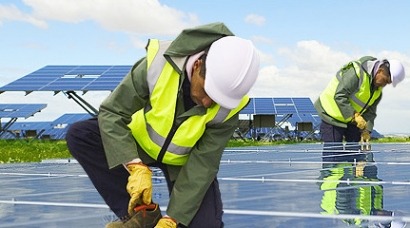
As it has unfolded, Renewable Energy Magazine has been keeping tracks on this case which began back in April 2010, when the then Labour government introduced the feed-in tariff.
When it launched, the feed-in tariff was 41.3p, meaning that that people who installed solar panels on the roofs of their homes in the UK could earn up to £1,400 a year. They could also use all of the power they generated for free.
There were also similar incentives for larger systems, although the payment rates were lower. It led to thousands of homeowners and businesses rushing to install solar power. But the newly-elected coalition government became alarmed at the rapid take up of the scheme, which is paid for by a levy on all electricity bills.
It was also apparent that the increased competition amongst installers and manufacturers meant that the price of installations was falling fast. This meant people were getting high returns for even lower prices.
In November last year, however, the Government said it would halve the rate to 21p and gave the industry just six weeks' notice. Solar power companies and environmental campaigners argued that the move was illegal and took the government to court. They won their case and the new rate did not come into effect until April this year.
The rate will continue to fall in the years ahead. The next cut will be in July when it is expected to fall to between 16p and 13p for domestic scale systems. There will then be regular cuts planned every 6 months with a 3 month warning.
Installation rate has plummeted
The fall in subsidies is meant to reflect the lower cost of installing solar panels. The cuts have led to a dramatic decline. The latest figures show that just four megawatts of solar power were installed in the first two weeks of April this year, compared with almost ten megawatts for the same time last year.
The decline has frustrated solar power companies who say that despite the cuts, solar power still offers a good deal. The falling installation costs mean homeowners and businesses can get the same returns under the new tariff.
EvoEnergy, one of the largest installers in the country and the Renewable Energy Association’s Installer of the Year, says its systems have nearly halved in price over the past two years. The company says that because the outlay is lower, customers can get an annual return of up to 12 per cent on their investment, better than the rate available in April last year.
A combination of fuel savings and income from the feed in tariff means a system could bring in around a thousand pounds a year.
So what does the future hold for the solar power industry? EvoEnergy expects demand to rise and fall in peaks and troughs linked to the deadline for each new reduction in the tariff.
The company has already seen the beginning of a boom in the commercial and agricultural sectors as companies race to install before the next cut in July. EvoEnergy expects consumer demand to follow suit with a boom in installations from homeowners in May and June.
The firm predicts that will be the future for the industry for the next few years as the market reacts to each new cut in the tariff. The advantage the new legislation offers however, is certainty as to then a cut will be happening and what the rates will be with 3 months warning allowing businesses to plan for the cuts.
It is clear that for solar power businesses, long-term survival depends on the ability to keep cutting costs of installations and supplies in line with the reductions to the feed in tariff. This means small to medium size firms unable to buy in bulk or negotiate discounts on prices will struggle and may well go under.
The "one man band" style firms, in contrast, may well survive requiring much lower profit margins. Larger nationwide operations with bigger buying power and the ability to drive efficiencies across a wider network will be the ones that survive and grow market share in the upcoming period.
But if the industry faces a struggle in the next few years, the long-term future is good. Solar power is growing worldwide as an industry. It has many advantages over its competitors; in the UK planning restrictions are lighter than for wind turbines. It can be deployed extremely quickly, once fitted, panels can be largely left alone for decades and despite the reputation of the UK weather, annual levels of sunshine are actually quite predictable.
On top of that, as solar power prices continue to fall, oil and gas prices are expected to rise. In around five years’ time they may even pass each other in different directions. At that point solar power will be an attractive proposition to homeowners and businesses, with or without subsidies.
For additional information:

